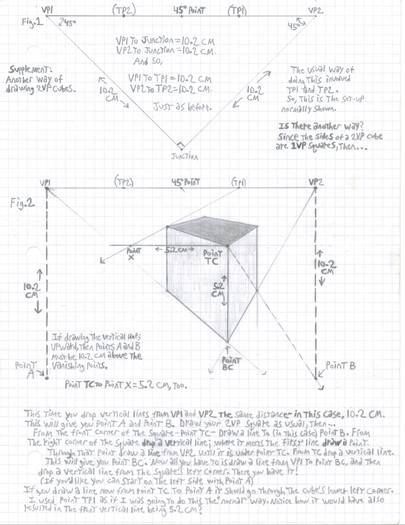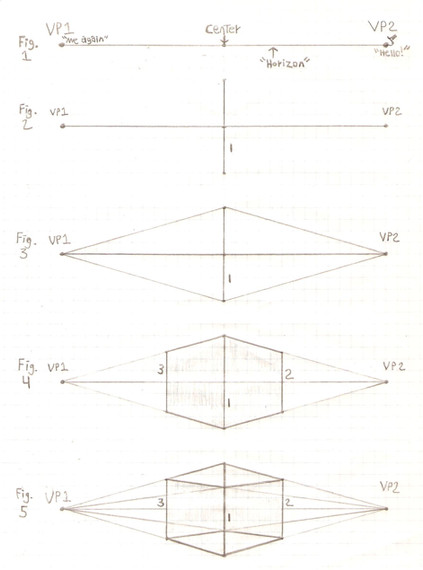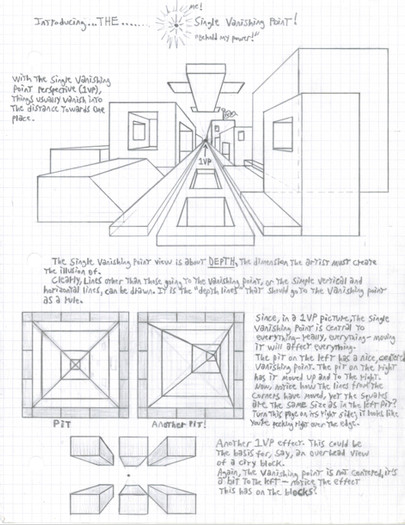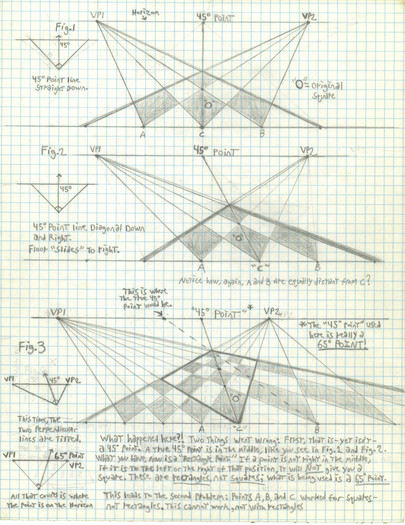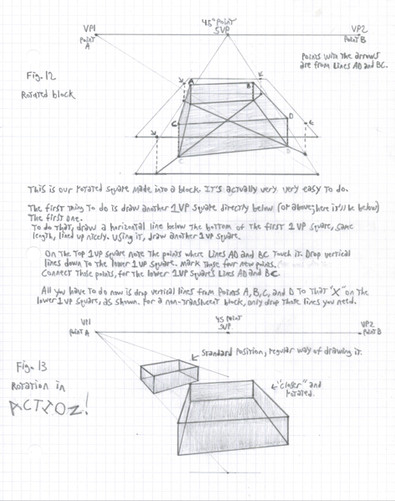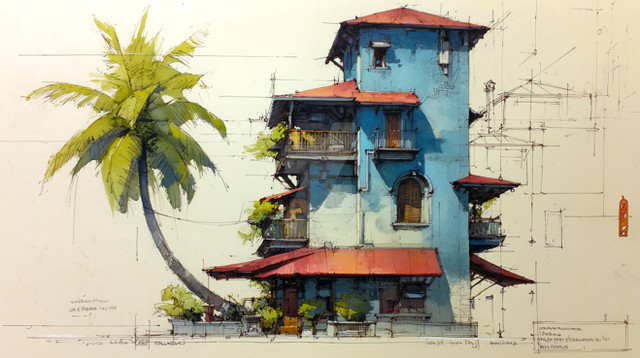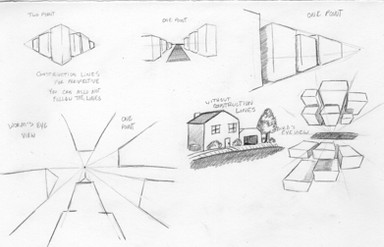HOME | DD
 GriswaldTerrastone — 2VP Cube Supplement: An Alternative Method 2
GriswaldTerrastone — 2VP Cube Supplement: An Alternative Method 2

Published: 2012-03-05 22:22:25 +0000 UTC; Views: 2534; Favourites: 22; Downloads: 97
Redirect to original
Description
So far, we've seen an alternate way of drawing a 2VP cube.It has the advantage of being a more direct method of doing it. Since also using the "TP" method in Fig. 2 would have resulted in the same cube, it shows that this method also works.
Still, with the TP method, it was also possible to draw consistent blocks other than cubes. Maybe you could draw blocks that were taller. maybe more squat.
To to that, you'd actually draw the desired block first, and then find the TP point for it. After that, using that TP point would always give you the same kind of block.
Can this be done with this method?
Yes it can!





It is actually incredibly easy! How far Point A or Point B should be from the vanishing points directly depends on how much taller- or shorter!- you want the block.
In Fig. 3, the set-up is the same as before with the horizon, the vanishing points, and even Point A- once again, it is 10.2 cm below VP1, so using it will result in a cube.
This time, however, Point B is only 5.1 cm below VP2. This is 1/2 as far.
I've also added a "Point C," which is 20.4 cm below VP2. This is twice as far.
Once again, I drew a 2VP square. A line was drawn from its front corner (Point TC again) to Point A. Following the steps as before, it resulted in a 2VP cube, which I darkened. So far, so as before. Which is good!
This time, though, a line was drawn from Point TC to Point B, which this time is only 1/2 the distance below VP2. The result was...a block only 1/2 as tall as the cube!
From the bottom front corner of that block (Point X), I once again drew a line to Point B, and once again drew in a 1/2 block. Now there are two blocks, which together equal the cube. Two 1/2 cubes that equal a cube.
Nifty! And so easy!
Now, a line was drawn from Point TC to Point C. Point C is 20.4 cm below VP2, which is twice as far as Point A is below VP1. The steps for drawing a block were followed again, and this time the result was...
A block twice as tall as a cube. It consists of both the light and dark cubes together.
It works.
As before, if you want to draw the vertical lines upward, the Points a, B, and (whatever) must be above the vanishing points.
If you do not have enough room on the paper for something like Point C, you can simply draw two cubes, one on the other, using Point A, just as the two 1/2 cubes were drawn and stacked using Point B.
At this "point" (boooo...) an interesting possibility comes to mind: can the points not be combined? Can you draw a cube with Point A, then stack a 1/2 cube on top of it using Point B, and then stack the cube on top of a twice-as-tall block using Point C?
Certainly you can. It's up to you. You can even draw something inside of another, as the 1/2 blocks were drawn inside the cube!
Oh- if a Point D had been drawn 15.3 cm below VP2- 1 1/2 times as far as Point A- a block 1 1/2 times as tall would have resulted. You could also get that by stacking a cube and a 1/2 cube one atop the other, too.
And that's it. Nifty!
Previous page:
[link]

